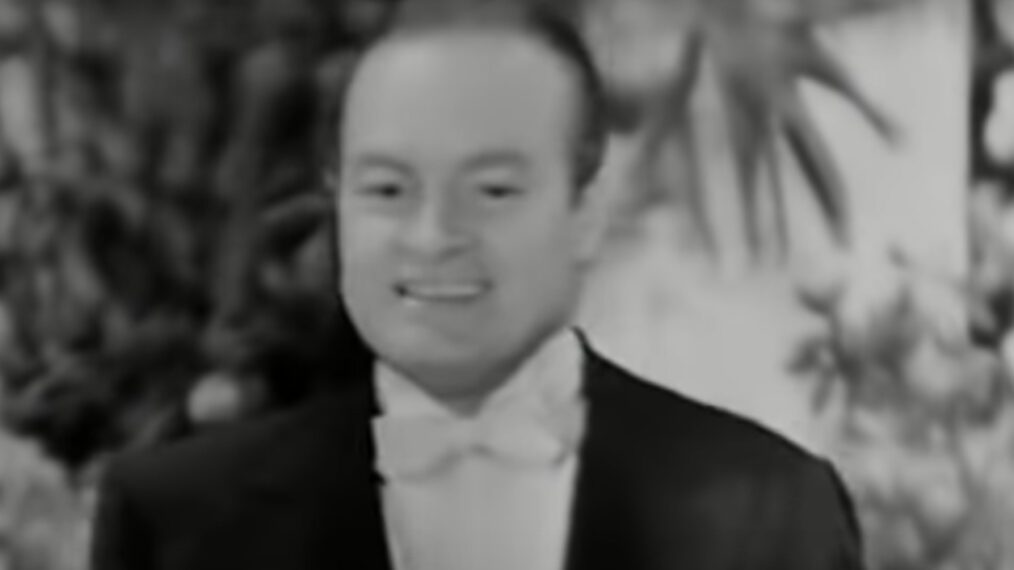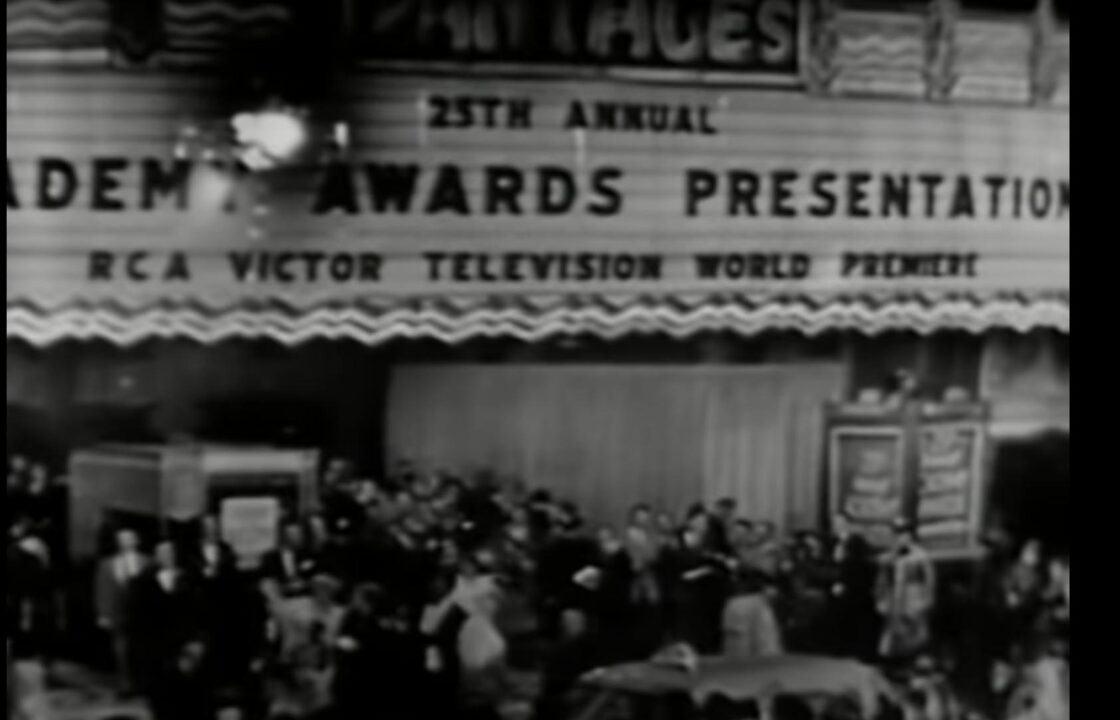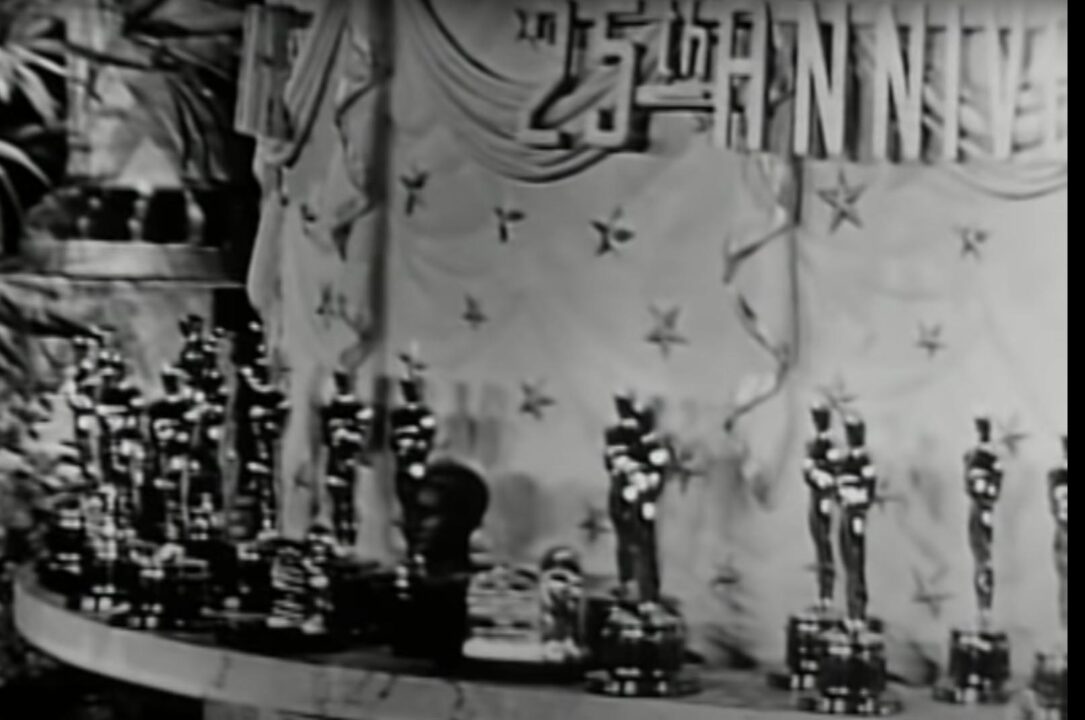Watch Bob Hope’s Opening Monologue at the First Televised Oscars Ceremony in 1953

“Television. That’s where movies go when they die,” Bob Hope says at one point in his opening monologue at the 25th Academy Awards.
This ceremony took place March 19, 1953, and was broadcast on NBC — the first Oscars ceremony to be televised (it was held simultaneously in New York City, where it was cohosted by Fredric March and Conrad Nagel).

The outside of Pantages Theatre in Hollywood ahead of the 25th Academy Awards in 1953 (youtube.com/@oscars)
Hope’s quip draws roars of laughter and applause from the roughly 3,000 people gathered (and looking pretty tightly packed in) at the Pantages Theatre on Hollywood Boulevard for the event. Their response, and a good amount of Hope’s jokes, reflect the uneasiness that was still felt in the film industry at the time that the ever-growing popularity of the boob tube would steal eyeballs away from movie screens.
But both industries found the perfect host for this inaugural broadcast in Hope, who had already hosted a number of Oscars, and would host others in the future (including the first color television broadcast of the ceremony 13 years later).
With his balance between gentle and somewhat pointed barbs, Hope seems to have been able to both address and maybe alleviate some of the tension during this telecast, which the host describes as “a wedding of two great entertainment mediums: motion pictures and television. And with Oscar [now] 25 years old, it’s high time he got married. While it’s true that he has a child bride [in the comparatively younger television], it’s a comfort to note that the kid is loaded. In fact, the bride’s father is picking up the tab for this wedding reception.”
Hope concludes, though, as he looks at both the gathered audience and then into the camera for home viewers, to whom he was perhaps most directing this point: “Movies are still your best entertainment, and will always be your best entertainment. If you don’t think so, ask Joe DiMaggio [who was seeing Marilyn Monroe at the time]. You don’t see him going out with Kukla, Fran and Ollie.”
You can enjoy watching Hope as he masters his Master of Ceremonies gig in this clip via the Oscars YouTube account:
There are other fascinating things to see here, as well, including the fact that the Oscar statuettes are all gathered together on a tiered table behind Hope (a scene he describes as looking “like Bette Davis‘ garage”), ready to be handed out in pretty workman-like fashion throughout the night, like a more upscale Knights of Columbus awards banquet, or something. (At one point, Hope turns to look at the Oscars with a sly grin, wondering if one year there might be one left over for him; he did receive an honorary Oscar at this ceremony.)
The intro also shows things that would become staples of future Oscar broadcasts, including shots of the stars arriving, with the announcer pointing out names like Tony Curtis and Janet Leigh, and Merle Oberon. It must have been exciting for home viewers to get this kind of coverage after previously only ever having perhaps seen clips of previous ceremonies in newsreels or photographs.

You can explore all of this and more, and get a sense of how the broadcast itself went, including the station breaks, by watching the full ceremony here. It won’t take up too much of your time, either; unlike some of the infamously overlong Academy Awards events in the decades that followed, this one comes in at a tight one hour and 53 minutes.
